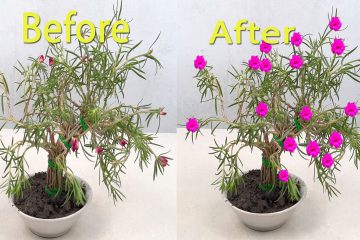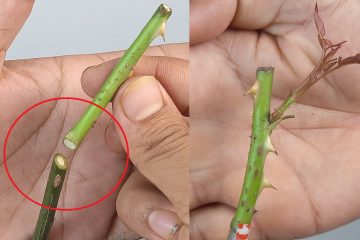Growing roses from cuttings is a rewarding way to multiply your favorite varieties. Here’s a step-by-step guide to help you succeed:
1. Timing is Key
- Best Times: While you can attempt it any time of year, spring and fall generally offer the most consistent results.
- Softwood cuttings: Taken in spring or early summer from new, flexible growth. These are often the easiest to root.
- Semi-hardwood cuttings: Taken in late summer or early fall from partially matured stems.
- Hardwood cuttings: Taken in late fall or early winter after the rose has gone dormant.
- Temperature: Aim for daytime temperatures between 70-80°F (21-27°C).
- Hydration: Water the parent rose plant well the day before you plan to take cuttings. Take cuttings in the early morning when the plant is well-hydrated.
2. Gather Your Materials
- Healthy rose plant: For taking cuttings.
- Sharp, sterile pruning shears or a knife: Clean your tools with rubbing alcohol before and after each cutting to prevent disease.
- Rooting hormone (powder or liquid): Optional but significantly improves success rates.
- Potting mix: A sterile, well-draining mix is crucial. A 50/50 mix of perlite and potting soil, or equal parts coarse sand and perlite/vermiculite, works well. Avoid mixes with fertilizer initially, as you want the roots to seek out nutrients.
- Pots or trays: At least 6 inches deep for adequate root growth.
- Clear cover (plastic bag, plastic bottle, or cloche): To create a humid environment.
- Water: To keep cuttings hydrated.
3. Take Your Cuttings
- Choose the right stem:
- Look for healthy, strong, green stems that are about the thickness of a pencil.
- Ideal stems are those immediately below flower buds that are about to open, or stems beneath flowers that have started to drop their petals.
- Avoid grafted roses, as the cuttings will be from the rootstock, not the desired variety.
- Cut the stem: Make a 45-degree angle cut about 1/4 inch below a leaf node (the bump where leaves or buds emerge).
- Length: Aim for cuttings 4-8 inches long with three to five nodes.
- Immediate hydration: Place cuttings in a container of water immediately after cutting to prevent dehydration.






















